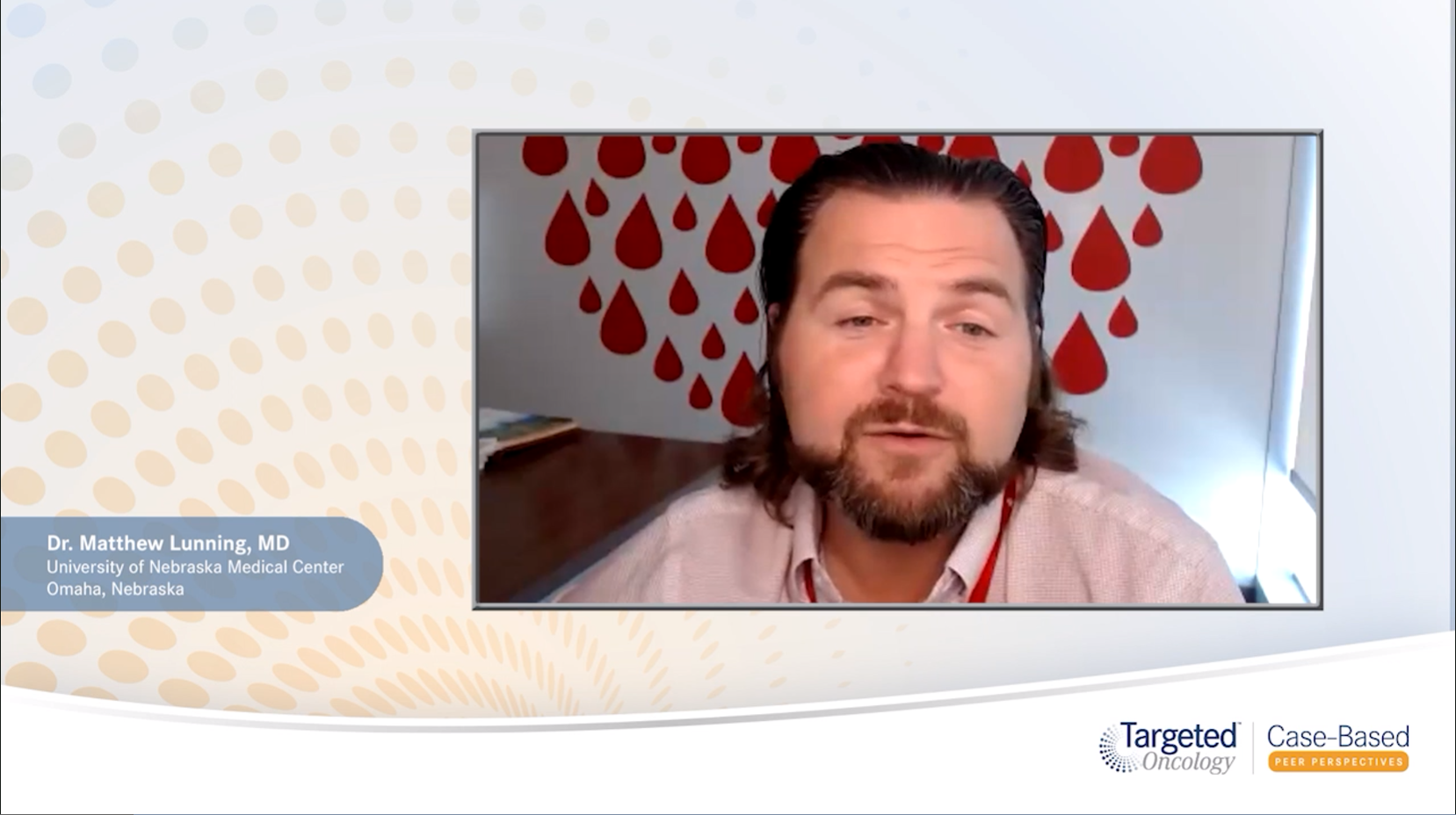Initial Treatment of Diffuse Large B-Cell Lymphoma
Gilles Salles, MD: We are facing a patient with newly diagnosed diffuse large B-cell lymphoma. Despite being in good shape, this patient is 74 years old, an age where we are at a frontier between different treatment options. What was really important was that the work-up was done and this was a patient with inoperable stage IV disease, elevated LDH [lactate dehydrogenase] levels. He had these symptoms and was classified as a patient at high-risk in terms of the IPI [International Prognostic Index] classification. If we know the patient's prognosis, we know that given the age and the clinical characteristics of the patient, he may not be the optimal patient to be cured with frontline rituximab/CHOP [cyclophosphamide, doxorubicin, vincristine, and prednisone]. There may be, unfortunately, a more substantial proportion of patients at this age and with these characteristics who either failed primary treatment or eventually have a relapse after achieving a clinical response.
It has been recommended in the WHO [World Health Organization] classification for patients with newly diagnosed diffuse large B-cell lymphoma that the cell of origin be analyzed by further molecular testing. This patient was CD10-positive, which already made him germinal center B-cell [GCB] type, but I advise to do this molecular testing because it helps to adjust treatment options at the time of relapse and at prognosis. We know that patients who are non-GCB have worse outcomes than those who are GCB.
Continuing with this patient, who is 74 years old, has diabetes mellitus, and clinical deterioration of the stages. Rituximab/CHOP remains the standard of care for these patients. He's GCB so there is no reason to choose any others. We don't have information about BCL2 but I think rituximab/CHOP will be the standard of care for this patient. I would have chosen 6 courses of R-CHOP [rituximab plus cyclophosphamide, doxorubicin, vincristine, and prednisone] for this patient.
Typically, more than 80% of the patients respond to R-CHOP and a majority of them have achieved a complete response. A few achieved a partial response, and only about 10% of patients or a bit more at this age and with these characteristics will, unfortunately, fail to respond to R-CHOP. This was an unusual case because most patients will respond, but our physician’s attention was brought to the fact that the lymph nodes were still visible after 4 cycles. There is no routine interim PET [positron emission tomography] that needs to be performed, but when the patient has clinical evidence of disease after 3 or 4 cycles of R-CHOP, that is not normal, and we should do additional work-up for this patient, and that is what was done.
The patients who are refractory are rather rare, 5%-10%. With these clinical characteristics I will say that the percentage of patients who will relapse after achieving a response will be in the range of 30%-40%. That's quite a number of patients that we will have to deal with in terms of new treatment options at the time of relapse or refractory disease.
When we see a patient with diffuse large B-cell lymphoma who has a relapse, the first question we ask is, “Is this patient transplant eligible?” This is taken into account, considering age, comorbidities, and eventually the patient’s wishes, the place where he/she lives, and his/her environment. Here we have seen a patient who we felt was not transplant eligible because of his age and status, so for patients ineligible for transplant, the options are rather limited.
What we usually do is deliver another set of immunochemotherapy, including rituximab and different drugs. It could be either gemcitabine/oxaliplatin, this would be our GEMOX [gemcitabine/oxaliplatin] regimen. Or it could be bendamustine, and this will be the bendamustine/rituximab protocol. Recently, polatuzumab vedotin was approved as an option, but mostly for third-line treatment. For these patients who are transplant ineligible, these options usually carry a couple of adverse effects and difficulties being administered.
Transcript edited for clarity.
Case: A 74-Year-Old Man with Diffuse Large B-Cell Lymphoma
Initial Presentation
- A 74-year-old man presented with fever, 14-lb unintentional weight loss and occasional chest pain
- PMH: DM, medically controlled
- PE: tired-appearing man; palpable bilateral cervical lymphadenopathy
Clinical Work-up
- Labs: LDH 2 times above normal; Hb 10.8 g/dL; bilirubin 2.3 mg/dL; creatinine 1.7 mg/fl; all others WNL
- Hepatitis B, C and HIV negative
- Lymph node biopsy; CD 20+ confirmed DLBCL; IHC panel: CD 10+, CD 19+
- Imaging:
- Whole body PET/CT scan showed activity the cervical lymph node region, largest node 2.5 cm; evidence of axillary and thoracic subcutaneous tissue involvement
- Ann Arbor stage 4; IPI: high-risk; ECOG PS 1
Treatment
- Treatment initiated with R-CHOP + RT; well-tolerated
- Interim PET scan after 4 cycles; progressive diseases noted
- Due to transplant ineligibility patient was treated with tafasitamab + lenalidomide









